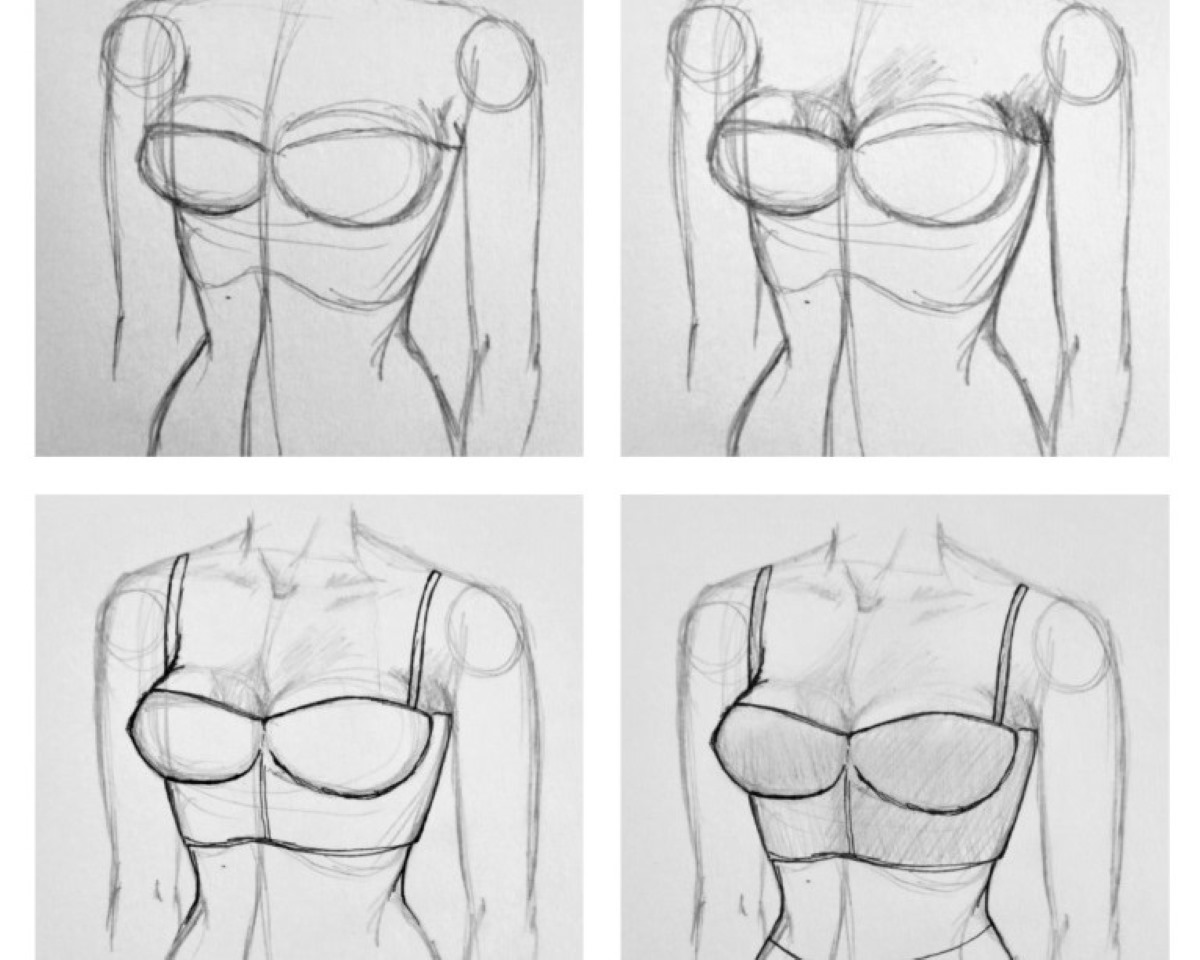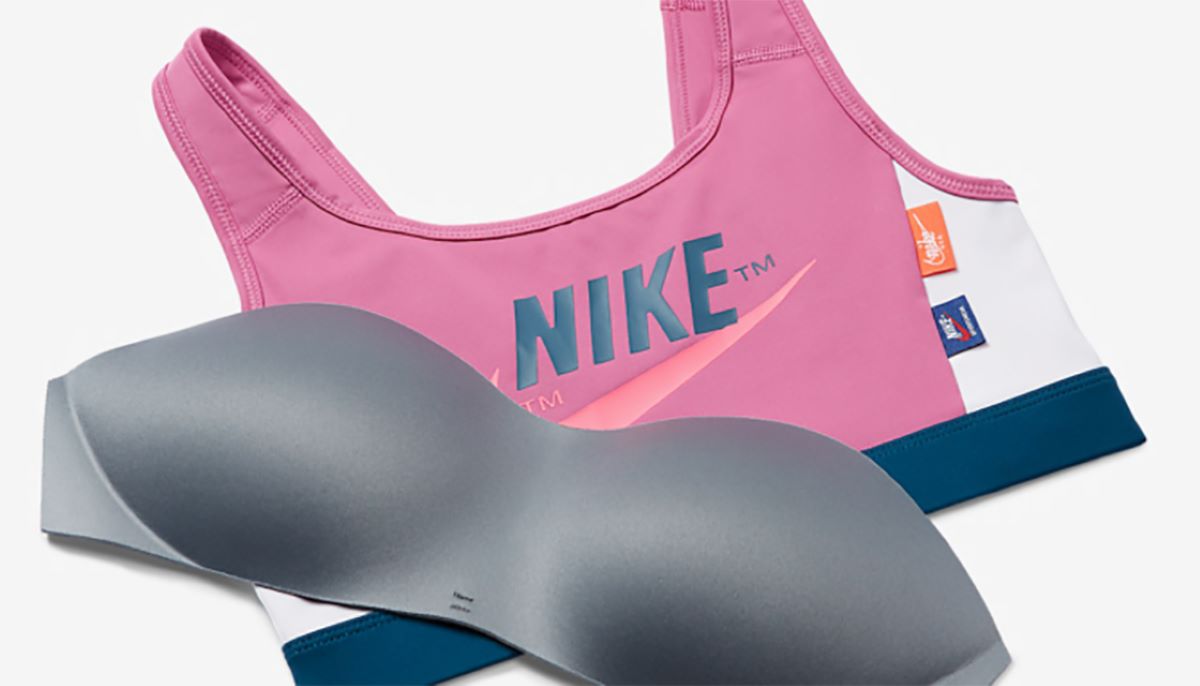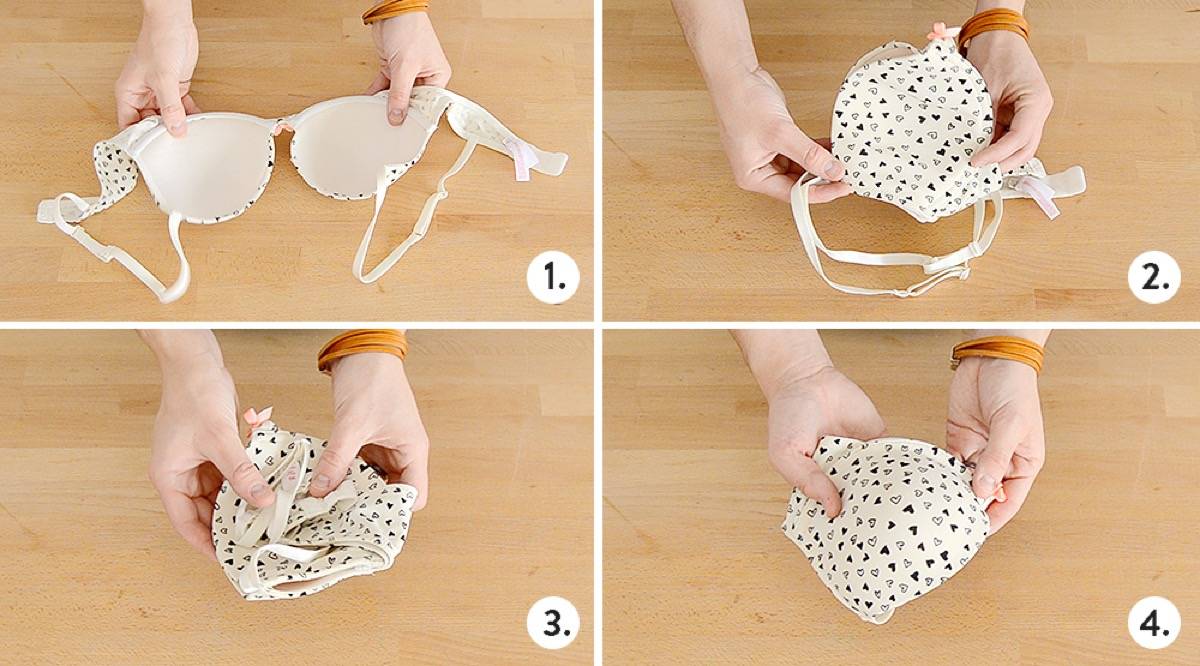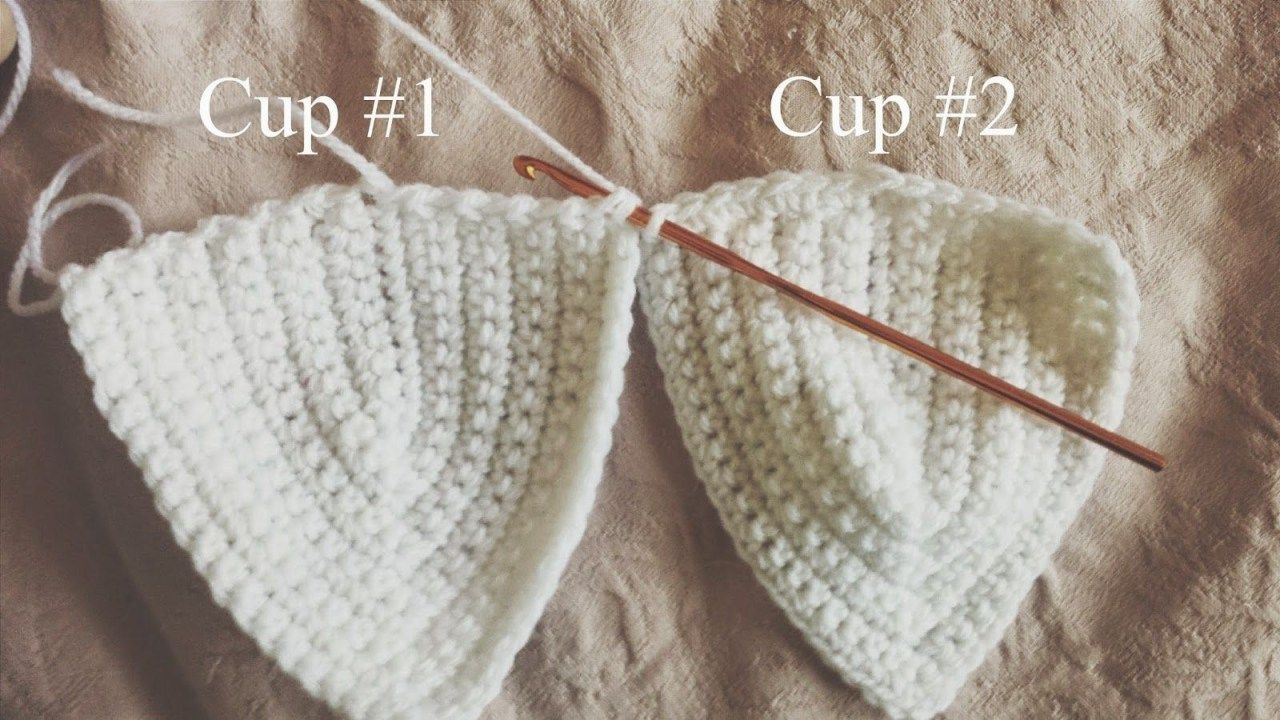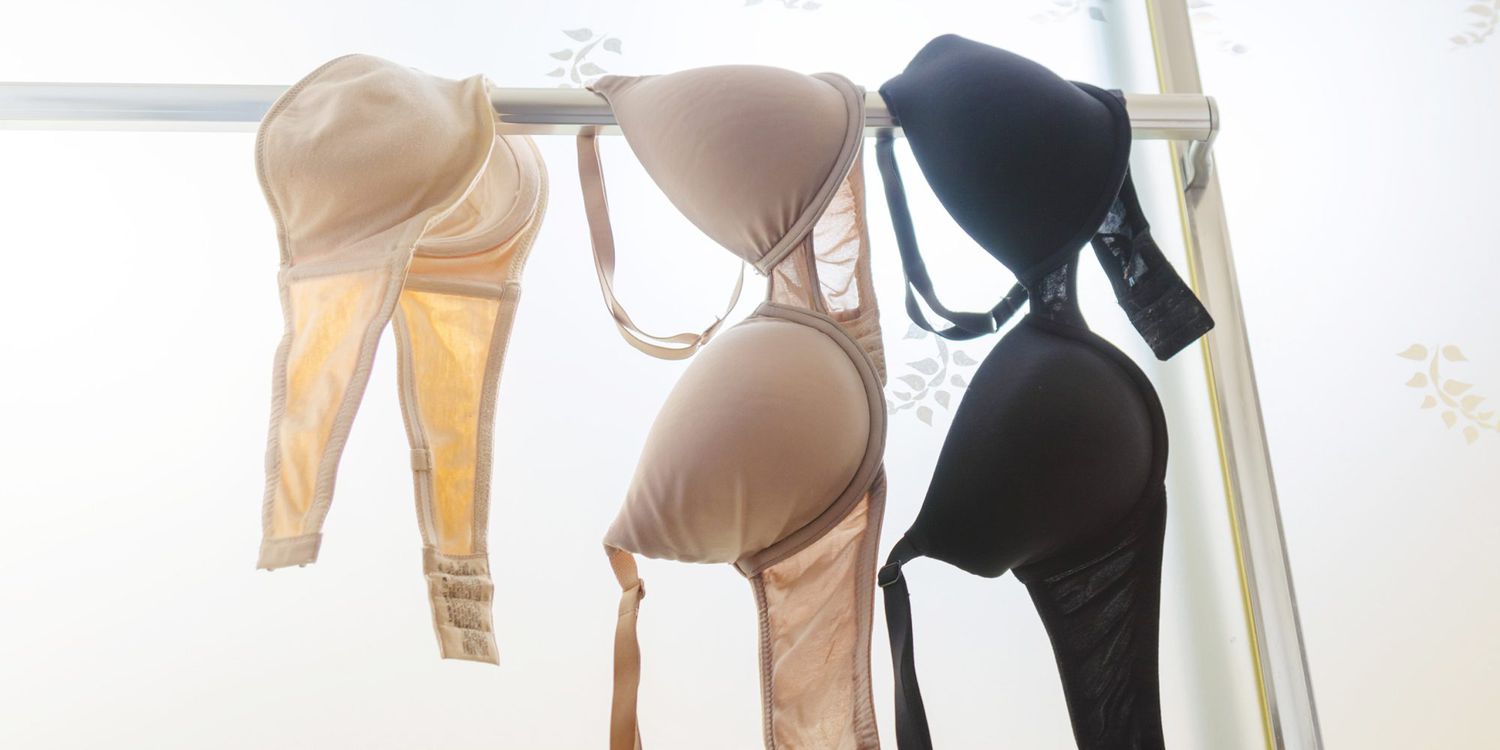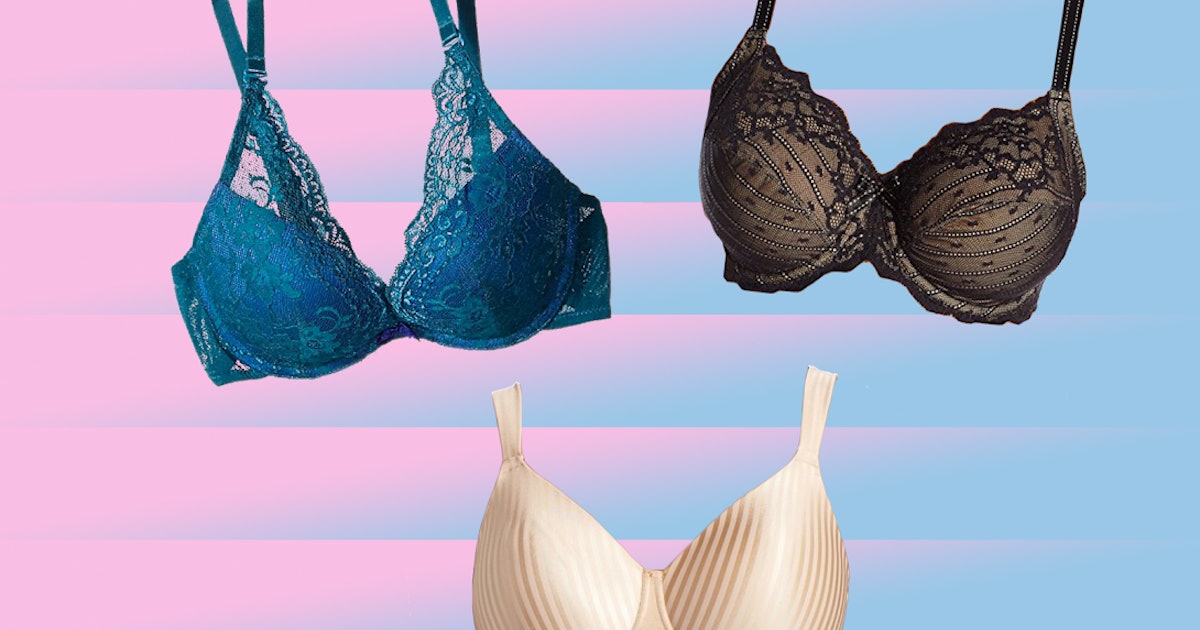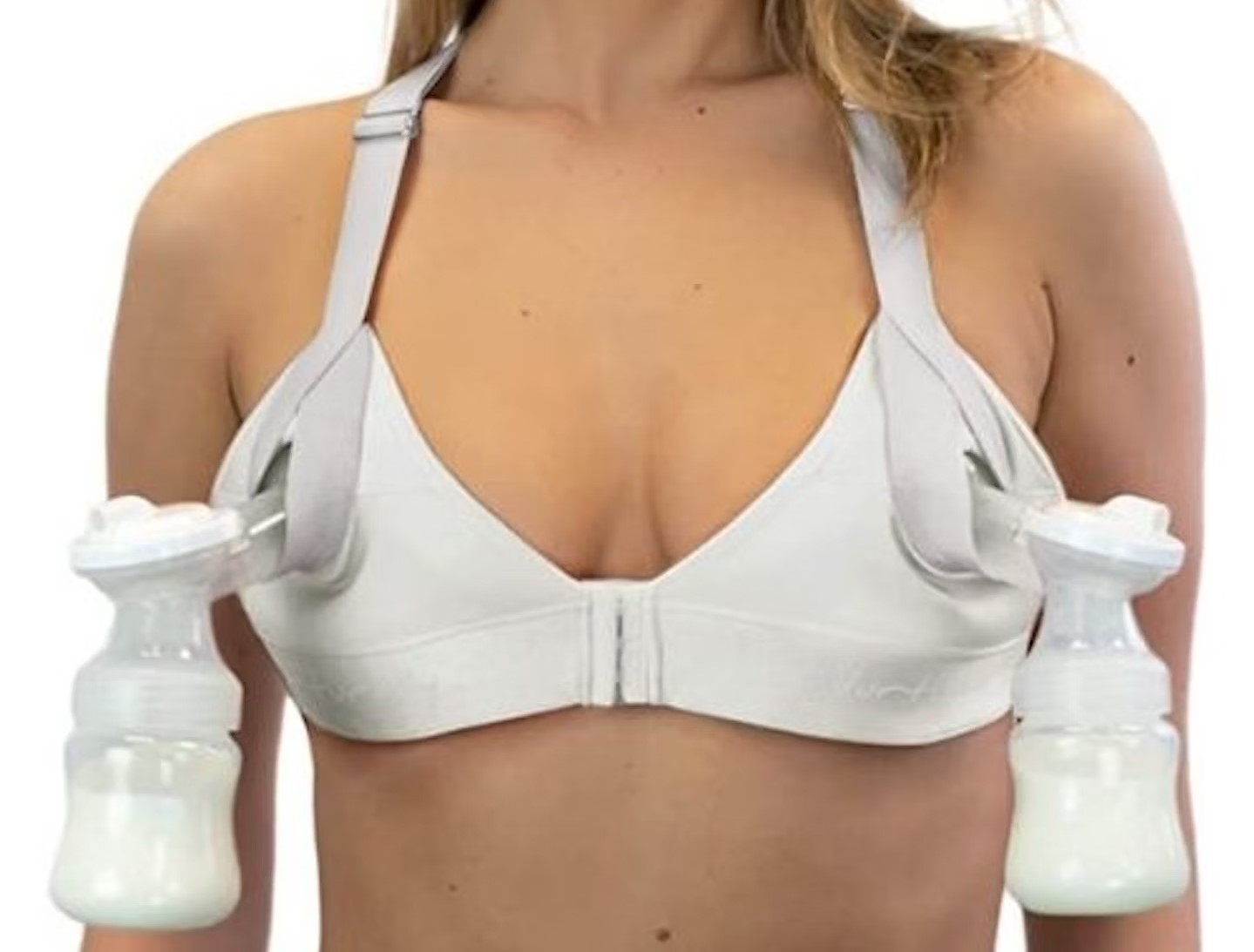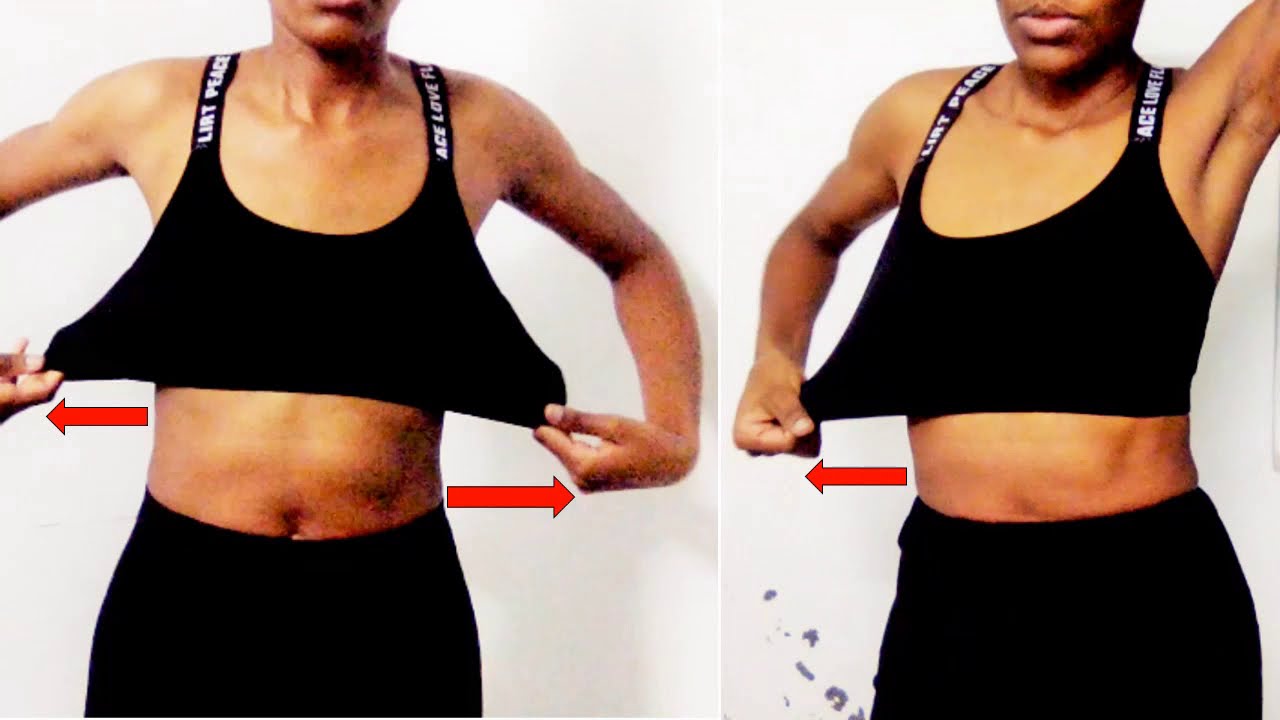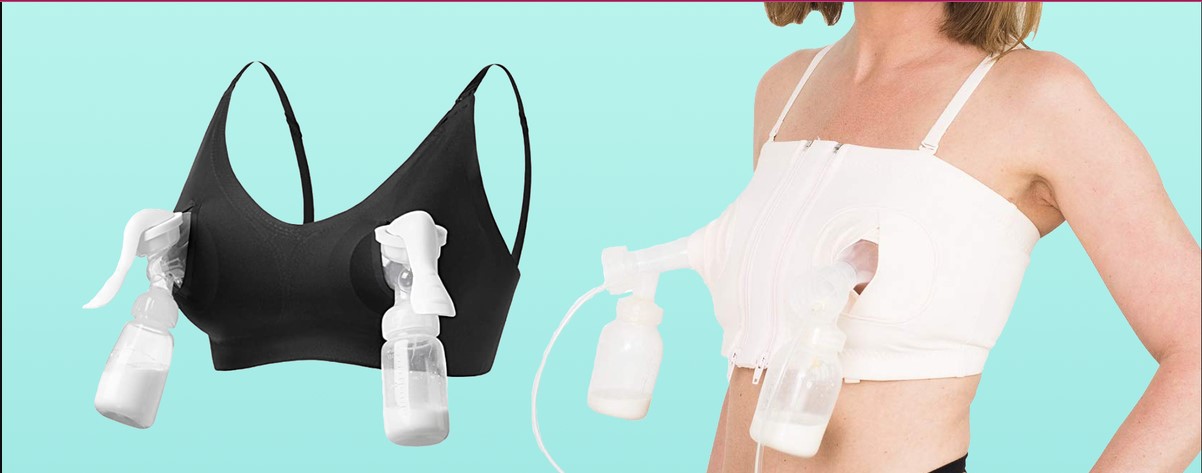Home>How-to Guides>For Women>How To Heal Bra Chafing
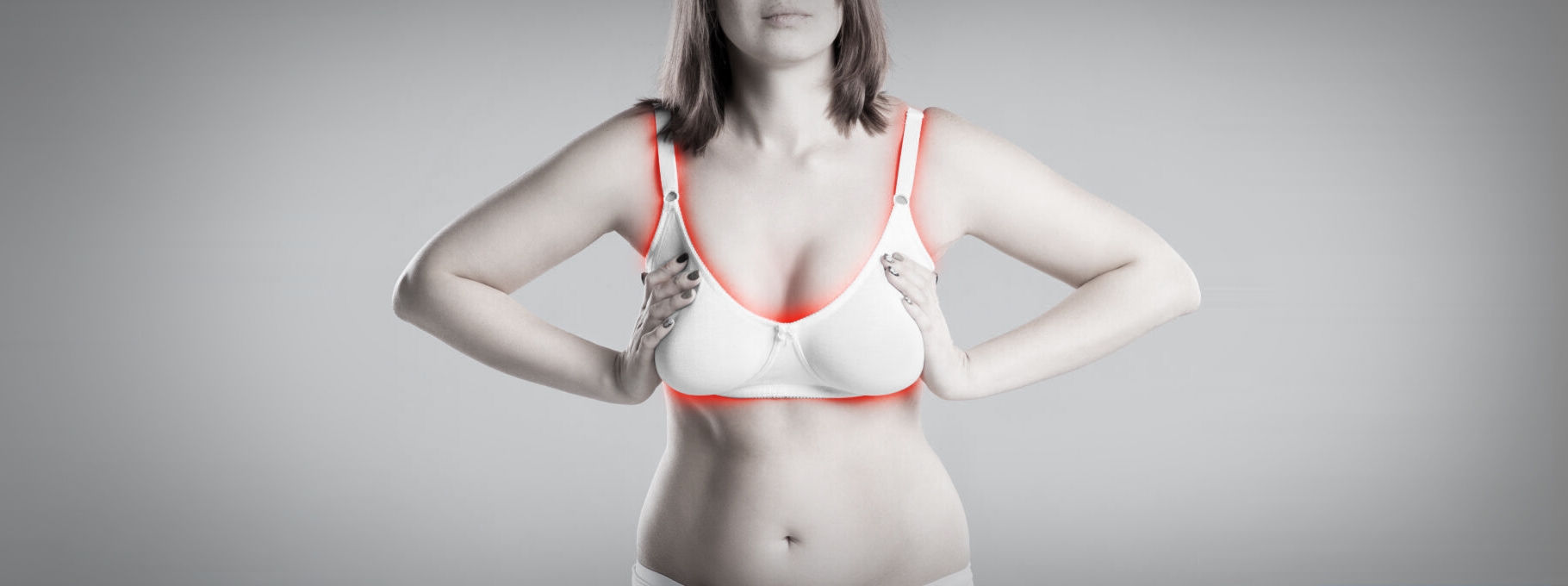

For Women
How To Heal Bra Chafing
Modified: August 5, 2023
Learn how to heal bra chafing for women with effective remedies and tips to soothe and prevent discomfort.
(Many of the links in this article redirect to a specific reviewed product. Your purchase of these products through affiliate links helps to generate commission for Under-tec.com, at no extra cost. Learn more)
Table of Contents
Introduction
For women, bra chafing can be an uncomfortable and often painful experience. Whether you’re a fitness enthusiast, an active professional, or simply someone who wears a bra on a daily basis, chafing can occur and cause irritation to the skin. Understanding how to prevent and treat bra chafing is essential for maintaining physical comfort and overall well-being.
Bra chafing refers to the friction and rubbing that occurs between the bra and the skin, resulting in irritation, redness, and sometimes even blisters or open sores. It commonly affects the underwire area, the straps, and the band of the bra, but can occur anywhere the bra comes into contact with the skin.
There are several factors that can contribute to bra chafing. One of the most common causes is ill-fitting bras. Bras that are either too tight or too loose can create friction against the skin, leading to chafing. The material of the bra can also play a role, as certain fabrics may be more prone to causing irritation. Additionally, sweating can exacerbate chafing, especially during physical activities or in hot and humid climates.
Fortunately, there are several preventive measures that can help minimize the risk of bra chafing. One of the first steps is to choose the right bra. Opt for bras that are made from breathable fabrics such as cotton or moisture-wicking materials that can help keep the skin dry.
Next, ensuring proper bra fitting is crucial. It’s essential to get professionally measured and fitted for a bra to ensure that it provides adequate support without being too tight or too loose. A well-fitting bra will reduce friction and minimize the chances of chafing.
What is bra chafing?
Bra chafing is a common skin irritation that occurs when there is friction between the bra and the skin. It is characterized by redness, soreness, and sometimes even the formation of blisters or open sores. The areas most commonly affected by bra chafing include the underwire area, the straps, and the band of the bra.
The friction caused by the constant rubbing of the bra against the skin can lead to inflammation, discomfort, and even pain. This can be particularly troublesome for women who wear bras for extended periods or engage in activities that involve repetitive movements. The severity of bra chafing can vary from mild irritation to more severe cases that require medical attention.
There are several factors that contribute to the development of bra chafing. One of the primary causes is wearing a bra that doesn’t fit properly. A bra that is too tight or too loose can create extra pressure and friction against the skin, leading to chafing. Additionally, bras made from certain materials can exacerbate the problem. Fabrics that are rough, abrasive, or do not allow proper ventilation can increase the likelihood of chafing.
Another factor that can contribute to bra chafing is excessive sweating. When sweat accumulates between the bra and the skin, it can further irritate and worsen the friction, making chafing more likely to occur. This is especially true during physical activities or in hot and humid climates.
Overall, bra chafing can be a bothersome and uncomfortable condition. However, by understanding its causes and taking appropriate preventive measures, it is possible to reduce the risk and severity of bra chafing. In the following sections, we will explore various ways to prevent and treat bra chafing, helping you maintain comfort and well-being.
Common causes of bra chafing
Several factors can contribute to the development of bra chafing. Understanding these common causes is essential to prevent and address the issue effectively. Here are some of the primary culprits:
1. Ill-fitting bras: Wearing a bra that doesn’t fit properly is one of the leading causes of bra chafing. Bras that are too tight can dig into the skin, creating friction and irritation. On the other hand, bras that are too loose may move excessively, leading to rubbing and chafing against the skin. It’s crucial to get professionally measured and fitted to ensure you’re wearing the right size bra.
2. Improper strap adjustment: The straps of your bra play a critical role in providing support and comfort. If they are too tight or too loose, they can create friction against your skin, resulting in chafing. Ensure that you adjust the straps to a length that provides a snug fit without digging into your shoulders or sliding off.
3. Unsuitable bra materials: Some fabrics used in bras can be rough, abrasive, or non-breathable, increasing the likelihood of chafing. Fabrics like lace or synthetic materials may trap moisture against the skin, exacerbating friction and irritation. Opt for bras made from soft, breathable materials like cotton or moisture-wicking fabrics that can help keep your skin cool and dry.
4. Excessive sweating: When you sweat, the moisture can become trapped between your bra and skin, creating a damp environment that worsens friction. This is particularly true during physical activities or in hot and humid climates. Adequate ventilation and moisture-wicking properties in your bra can help minimize the effects of sweat and reduce chafing.
5. Prolonged wear: Wearing a bra for an extended period, especially if it is ill-fitting or made from unsuitable materials, can increase the chances of chafing. It’s important to give your skin regular breaks from wearing a bra, allowing it to breathe and recover.
By understanding these common causes of bra chafing, you can take proactive steps to prevent it. The next section will discuss preventive measures you can take to minimize the risk of bra chafing and maintain comfort throughout the day.
Prevention measures for bra chafing
Preventing bra chafing is key to ensuring comfort and maintaining healthy skin. Fortunately, there are several measures you can take to minimize the risk of chafing and irritation. Here are some effective prevention tips:
1. Choosing the right bra: Opt for bras made from breathable and soft materials, such as cotton or moisture-wicking fabrics. These materials help keep the skin dry and minimize friction. Avoid bras with lace or rough textures, as they can contribute to chafing.
2. Proper bra fitting: Ensure that your bra fits well and provides adequate support. Get professionally measured and fitted to determine the correct band size and cup size. Avoid bras that are too tight or too loose, as they can cause friction against the skin and lead to chafing.
3. Fabric choices and care: Pay attention to the fabric of your bras and ensure they are comfortable and suitable for your skin. Wash your bras with gentle detergent and avoid using harsh chemicals or fabric softeners that can irritate the skin.
4. Moisture-wicking options: Consider wearing bras specially designed with moisture-wicking properties. These bras are designed to draw sweat away from the skin, keeping you dry and reducing the chances of chafing. Look for bras labeled as “sweat-wicking” or “breathable.”
5. Applying protective barriers: Before putting on your bra, you can apply a thin layer of petroleum jelly or an anti-chafing balm to areas prone to chafing. These barriers create a smooth surface and reduce friction against the skin.
6. Avoiding excessive heat and moisture: Try to stay in a cool and dry environment, especially during hot weather or intense physical activities. Excessive heat and moisture can increase sweat production, leading to more chafing. If you do sweat, pat the affected areas dry and consider changing into a fresh bra if needed.
By implementing these preventive measures, you can significantly reduce the risk of bra chafing. However, if you do experience chafing, there are various treatments and home remedies that can provide relief, as discussed in the next sections.
Choosing the right bra
Choosing the right bra is vital for both comfort and preventing bra chafing. The right bra should provide adequate support, a proper fit, and be made from materials that minimize friction against the skin. Here are some factors to consider when selecting the right bra:
1. Breathable fabrics: Look for bras made from breathable materials, such as cotton or moisture-wicking fabrics. These materials allow air circulation and help keep the skin dry, reducing the risk of chafing.
2. Suitable cup and band size: Ensure that you are wearing the correct cup and band size. Bras that are too tight can dig into the skin, causing irritation, while bras that are too loose may move excessively and create friction. Get professionally measured to determine your optimal size and consider periodic fittings as your body changes over time.
3. Wire or wire-free: Some women find underwire bras to be supportive and comfortable, while others prefer wire-free options. It’s important to find what works best for you. If you choose an underwire bra, make sure the wire sits comfortably against your rib cage without digging into the skin.
4. Strap width and adjustability: The width and adjustability of the bra straps play a role in providing support and minimizing chafing. Wider straps can distribute the weight of your breasts more evenly, reducing the strain on your shoulders. Adjustable straps allow for a customized fit and can help avoid rubbing against the skin.
5. Seamless and smooth designs: Bras with seamless and smooth designs can minimize friction against the skin. Look for bras without prominent seams, lace, or embellishments that can cause irritation.
6. Extra features: Some bras come with additional features designed to enhance comfort and reduce chafing, such as padded straps or padded underwire casings. These features can provide added cushioning and reduce pressure points.
Remember, everyone’s preferences and body types are unique, so it may take some trial and error to find the perfect bra for you. Don’t hesitate to explore different options and brands until you discover the one that offers the best combination of support, comfort, and chafing prevention. Taking the time to find the right bra can make a significant difference in your overall comfort and well-being.
Proper bra fitting
A properly fitting bra is essential for comfort, support, and minimizing the risk of bra chafing. Many women may not realize they are wearing the wrong size bra, which can lead to discomfort, poor posture, and increased chances of chafing. Here are some tips for achieving a proper bra fit:
1. Get professionally measured: Visit a lingerie store or department store that offers bra fitting services. A trained professional can accurately measure your band size and cup size, helping you find the right fit.
2. Know the signs of an ill-fitting bra: Understanding the signs of an ill-fitting bra can help you identify when it’s time to get a new one. Common signs include straps that dig into the shoulders, a band that rides up the back, spillage or gaping in the cups, or a bra that feels too tight or too loose.
3. Take periodic measurements: Your body shape and size can change over time due to various factors such as weight fluctuations, pregnancy, or aging. It’s important to take new measurements every few months or as needed to ensure you’re wearing the correct bra size.
4. Try on different sizes and styles: Don’t be afraid to try on different sizes and styles of bras to find the best fit for your body. Keep in mind that different brands may have slight variations in sizing, so be open to experimenting with different options.
5. Check the band: The band of your bra should be snug but comfortable. It should fit horizontally across your back and remain parallel to the ground. If the band rides up or feels too tight, consider trying a different band size.
6. Check the cup: The cups of your bra should fully encompass your breasts without any spillage or gaps. The underwire, if present, should enclose your breast tissue without poking or digging into your skin. Ensure the underwire sits flat against your rib cage.
7. Adjust the straps: The straps should be adjusted to a length that provides adequate support without digging into your shoulders. They should stay in place and not slide off or create excessive pressure points.
Proper bra fitting is essential for both comfort and reducing the risk of bra chafing. It may take some time and effort to find the right fit, but the benefits in terms of comfort and well-being are well worth it. Don’t hesitate to seek professional help to ensure you’re wearing the correct bra size and consider periodic fittings to account for any changes to your body. Remember, a well-fitted bra can make all the difference in your daily comfort and confidence.
Fabric choices and care
The choice of fabric in your bras can greatly impact your comfort level and the likelihood of experiencing bra chafing. The right fabric can help regulate moisture, minimize friction, and keep your skin cool and dry. Here are some fabric choices and care tips to consider:
1. Opt for breathable materials: Look for bras made from breathable fabrics like cotton or bamboo. These natural materials allow air circulation, reducing the buildup of heat and sweat that can lead to chafing. They also tend to be soft against the skin, minimizing friction.
2. Avoid rough or abrasive fabrics: Fabrics like lace or those with textured surfaces can be irritating to the skin and increase the risk of chafing. If you prefer bras with lace or embellishments, ensure the fabric underneath is soft and non-abrasive against your skin.
3. Choose moisture-wicking fabrics: Moisture-wicking fabrics, such as those used in athletic or sports bras, can help draw sweat away from the skin, keeping you dry during workouts or hot weather. These fabrics are designed to promote evaporation, reducing the chances of chafing caused by excessive moisture.
4. Consider seamless designs: Bras with seamless designs reduce the risk of friction and irritation caused by seams. Seamless bras have minimal or no stitching, creating a smooth surface against your skin and minimizing the chance of chafing.
5. Follow proper bra care: Proper care can extend the lifespan of your bras and maintain their fabric integrity. Always follow the washing instructions provided by the manufacturer. Using a mild detergent and hand-washing your bras can help preserve their elasticity and prevent damage to delicate fabrics.
6. Avoid using harsh chemicals or fabric softeners: Harsh chemicals or fabric softeners can not only be irritating to the skin but may also break down the fabric fibers over time. Stick to gentle detergents that are free from irritants and avoid using fabric softeners that can leave residue on the fabric.
7. Rotate your bras: Having multiple bras in your rotation allows each one to rest between wears, reducing wear and tear on the fabric. This also allows any moisture or sweat absorbed by the bra to fully dry before wearing it again.
By choosing bras made from breathable and soft fabrics, and properly caring for them, you can minimize the risk of chafing and ensure optimal comfort throughout the day. Remember to take note of the fabric choices when purchasing new bras and establish a routine for proper care and maintenance to extend their longevity.
Moisture-wicking options
Sweat and moisture can exacerbate the risk of bra chafing, especially during physical activities or in hot and humid weather. Choosing bras with moisture-wicking properties can help prevent excess sweat from building up and minimize skin irritation. Here are some moisture-wicking options to consider:
1. Performance-based bras: Performance bras, often designed for sports or active wear, are typically made from moisture-wicking fabrics. These fabrics are specially designed to draw moisture away from the skin and promote quick evaporation, keeping you dry and comfortable during workouts or intense activities.
2. Mesh panels or ventilation: Some bras feature strategically placed mesh panels or ventilation zones that allow for increased air circulation. These areas can help dissipate heat and moisture, reducing the risk of chafing in areas prone to sweating, such as the underbust or between the breasts.
3. Moisture-wicking lining: Look for bras with a moisture-wicking lining that comes into direct contact with your skin. This lining helps pull sweat away from the skin, preventing it from saturating the fabric and reducing the risk of chafing.
4. Seamless construction: Seamless bras can be beneficial for moisture-wicking purposes as they minimize seam friction and help wick away moisture more efficiently. Without bulky seams, there are fewer areas for sweat to pool, reducing the chance of chafing.
5. Convertible or adjustable styles: Bras with adjustable straps or convertible options allow you to customize the fit and ventilation. You can adjust the straps to loosen or tighten them for improved airflow and to prevent excess moisture accumulation.
6. Bra liners or sweat pads: If you have a favorite bra that lacks moisture-wicking properties, consider using bra liners or sweat pads. These absorbent pads can be placed between your bra and skin to help soak up excess sweat and reduce the risk of chafing.
Moisture-wicking bras are not limited to athletic or sports bras. Many everyday bras now incorporate moisture-wicking features, making them suitable for everyday activities or work environments. When shopping for bras, look for labels indicating moisture-wicking or sweat-wicking properties, and consider your specific needs when selecting the most suitable option. Investing in moisture-wicking bras can help minimize the discomfort and potential chafing caused by excessive sweating, keeping you dry and comfortable throughout the day.
Applying protective barriers
Applying protective barriers to areas prone to chafing can help reduce friction and minimize the risk of discomfort and irritation. These barriers create a smooth and protective layer between the bra and the skin. Here are some options for applying protective barriers:
1. Petroleum jelly: Applying a thin layer of petroleum jelly to areas prone to chafing can create a protective barrier. Petroleum jelly is effective in reducing friction and minimizing irritation. It also helps moisturize the skin, keeping it supple and less prone to chafing. Remember to use a non-scented, hypoallergenic version if you have sensitive skin.
2. Anti-chafing balms: Anti-chafing balms or creams are specifically designed to prevent friction and provide a protective layer. These balms often contain ingredients like dimethicone or silicone to create a smooth barrier on the skin. Apply a small amount to areas that commonly experience chafing, such as the underwire area, straps, or band.
3. Body powders: Body powders, such as talcum or cornstarch-based powders, can help absorb excess moisture and reduce friction. Apply a light dusting of powder to areas prone to chafing to help keep the skin dry and minimize irritation. Be sure to choose a powder that is talc-free to avoid any potential health risks.
4. Hydrogel dressings: Hydrogel dressings are thin, transparent sheets that adhere gently to the skin. They create a protective barrier while providing a cooling and soothing effect. These dressings can be used on existing chafed areas to help provide relief and promote healing.
5. Bandage or tape: For areas with more severe chafing, applying a bandage or medical tape can help protect the affected area and prevent further friction. However, it’s important to ensure the bandage or tape is not too tight, as this can restrict circulation and worsen the chafing.
When applying protective barriers, it’s essential to clean and dry the skin thoroughly before application. This helps ensure better adhesion and effectiveness of the barrier. Additionally, reapply the protective barrier as needed, especially during long periods of activity or in hot and humid conditions.
Remember, while protective barriers can help reduce friction and minimize chafing, it’s important to address the underlying causes as well, such as ill-fitting bras or excessive sweating. Applying protective barriers should not replace finding the proper fit or taking preventive measures, but rather serve as an additional tool to enhance comfort and reduce the risk of bra chafing.
Treating bra chafing
If you’re experiencing bra chafing, taking prompt action can help alleviate discomfort and promote healing. Here are some effective treatment options for bra chafing:
1. Cleanse the affected area: Gently cleanse the chafed area with a mild soap and lukewarm water. Avoid using harsh soaps or scrubbing vigorously, as this can further irritate the skin. Pat the area dry with a soft towel.
2. Apply a soothing ointment: Apply a thin layer of a soothing ointment, such as aloe vera gel or a hydrocortisone cream, to the chafed area. These products can help reduce inflammation, alleviate itching, and promote healing. Look for options that are fragrance-free and suitable for sensitive skin.
3. Use cold compresses: Applying a cold compress or an ice pack wrapped in a clean cloth to the chafed area can help numb the area and reduce inflammation. Leave the compress on for 10-15 minutes at a time, several times a day.
4. Avoid further irritants: Avoid wearing tight or restrictive clothing that can rub against the chafed area and worsen the irritation. Stick to loose, breathable clothing that allows the skin to breathe and heal.
5. Take over-the-counter pain relievers: Over-the-counter pain relievers like ibuprofen or acetaminophen can help alleviate pain and reduce inflammation associated with bra chafing. Follow the recommended dosage and instructions provided on the packaging.
6. Give the affected area time to heal: It’s important to give the chafed area adequate time to heal. Avoid activities or behaviors that can further exacerbate the chafing, such as wearing tight bras or engaging in activities that cause excessive sweating. Opt for comfortable, loose-fitting bras or consider going braless temporarily until the area heals.
7. Seek medical attention if needed: If the chafed area does not show signs of improvement after a few days or if it becomes infected, it’s advisable to seek medical attention. Signs of infection may include increased pain, swelling, pus, or red streaks extending from the chafed area.
Remember, prevention is the best approach to avoid bra chafing, but if it does occur, taking prompt and appropriate treatment measures can help alleviate discomfort and promote healing. If home remedies and self-care measures are not effective, consult with a healthcare professional for further evaluation and guidance.
Home remedies for bra chafing
When faced with bra chafing, there are several home remedies that can provide relief and promote healing. These remedies are easily accessible and can help alleviate discomfort without the need for specialized products. Here are some effective home remedies for bra chafing:
1. Warm saltwater soak: Add a tablespoon of salt to warm water and soak the affected area for 10-15 minutes. Saltwater helps cleanse the skin, reduce inflammation, and promote healing.
2. Oatmeal bath: Mix colloidal oatmeal with water to create a paste and apply it to the chafed area. Let it sit for 10-15 minutes and then rinse off. Oatmeal has soothing properties that can calm irritated skin and relieve itching.
3. Plain yogurt: Apply plain, unsweetened yogurt to the chafed area and let it sit for 15-20 minutes. Rinse off with cool water. Yogurt contains probiotics and enzymes that can help soothe inflammation and promote healing.
4. Cucumber slices: Place freshly cut cucumber slices on the chafed area for 10-15 minutes. Cucumber has a cooling effect and can help reduce inflammation and soothe irritated skin.
5. Coconut oil: Gently massage a small amount of coconut oil onto the chafed skin. Coconut oil is known for its moisturizing and soothing properties, making it beneficial for chafed skin.
6. Aloe vera gel: Apply pure aloe vera gel extracted from the plant onto the chafed area. Aloe vera has anti-inflammatory properties and can help soothe and heal the skin.
7. Cornstarch or arrowroot powder: Lightly dust the chafed area with cornstarch or arrowroot powder to help absorb excess moisture and reduce friction. Make sure the area is clean and dry before applying.
8. Cold compress: Apply a cold compress or an ice pack wrapped in a clean cloth to the chafed area for 10-15 minutes. This can help numb the area, reduce inflammation, and alleviate discomfort.
It’s important to note that while home remedies can provide temporary relief, they may not address the underlying causes of bra chafing. Therefore, it is crucial to also consider preventive measures, such as proper bra fitting, fabric choices, and protective barriers, to minimize the risk of chafing in the future.
If home remedies do not provide sufficient relief or if the chafing worsens or becomes infected, it is recommended to seek medical attention for further evaluation and treatment.
When to seek medical attention
In most cases, bra chafing can be effectively managed and treated with home remedies and self-care measures. However, there are instances where seeking medical attention is necessary. Here are some situations where you should consider seeking medical advice:
1. Infection: If the chafed area becomes infected, characterized by increased redness, swelling, pus, or the presence of red streaks extending from the chafed area, it is important to seek medical attention. Infections can be accompanied by symptoms such as fever, increased pain, or tenderness.
2. Severe or worsening symptoms: If your symptoms worsen despite attempts at home remedies, or if you experience severe pain, persistent itching, or an increase in the size or depth of the chafed area, it is advisable to consult a healthcare professional.
3. Unbearable discomfort: If the discomfort caused by bra chafing becomes unbearable and affects your daily activities and quality of life, it may be time to seek medical advice. A healthcare professional can assess your situation and recommend appropriate treatment options to alleviate your discomfort.
4. Recurrent or persistent chafing: If you continually experience bra chafing despite taking preventive measures and trying various treatments, it may be necessary to consult a healthcare professional. They may be able to identify underlying factors contributing to the recurrent chafing and provide further guidance or treatment options.
5. Chronic skin conditions: If you have pre-existing skin conditions, such as eczema or psoriasis, that are exacerbated by bra chafing, it’s important to consult with a healthcare professional. They can provide specialized advice and treatment options tailored to your specific needs.
Remember, healthcare professionals have the knowledge and expertise to accurately diagnose and treat various skin conditions. If you are unsure about the severity of your symptoms or if they persist despite at-home efforts, it’s always wise to seek medical attention. Timely intervention can help prevent complications and ensure proper healing of the chafed skin.
Conclusion
Bra chafing can be a bothersome and uncomfortable issue for many women. However, by understanding its causes and implementing preventive measures, it is possible to minimize the risk and severity of bra chafing. Choosing the right bra, ensuring proper fit, selecting suitable fabrics, and incorporating moisture-wicking options are helpful in preventing chafing.
If chafing does occur, it is essential to take action promptly. Treatment options such as applying protective barriers, practicing proper bra care, and seeking relief through home remedies can help alleviate discomfort and promote healing. In some cases, seeking medical attention may be necessary, particularly in instances of infection or severe and persistent symptoms.
Remember, everyone’s body is unique, so finding the right bra and preventive measures that work for you may take some trial and error. It’s important to prioritize your comfort and well-being by paying attention to signs of chafing and taking steps to prevent and treat it effectively.
By following the guidelines outlined in this article and listening to your body, you can minimize the impact of bra chafing, allowing you to go about your daily activities with comfort and confidence.

